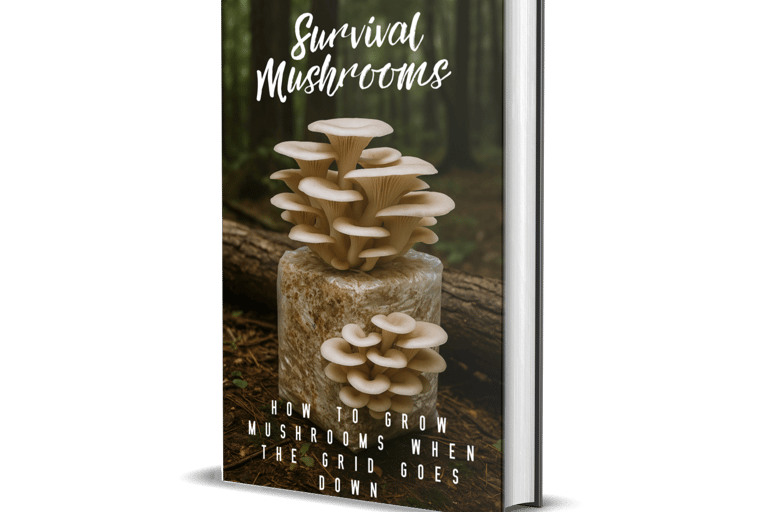How to Dry Mushrooms Without Electricity (Perfect for Off-Grid or SHTF)
Need to preserve mushrooms without a dehydrator? Learn the best off-grid and no-power techniques for drying mushrooms in survival or homestead situations.
GROWING
7/11/20252 min read


How to Dry Mushrooms Without Electricity (Perfect for Off-Grid or SHTF)
Drying mushrooms is one of the best ways to preserve them long-term — especially when refrigeration or freezing isn’t an option. But what if the power goes out? Or you’re off-grid entirely? Whether you're homesteading, preparing for emergencies, or just experimenting with traditional methods, learning how to dry mushrooms without electricity is a skill worth having.
In this post, I’ll walk you through multiple low-tech ways to dry mushrooms using only natural heat, airflow, or simple home setups.
1. Air Drying on a Mesh Screen
If you're in a warm, dry climate with good airflow, you can air-dry mushrooms on a mesh screen or a homemade rack.
What you’ll need:
A mesh screen (like a clean window screen or dehydrator tray)
A dry, shaded spot with steady airflow (outdoor patio, shed, etc.)
A fan (optional if electricity is available)
Steps:
Slice mushrooms thinly to speed up drying.
Lay them out in a single layer — not touching.
Elevate the screen on bricks or cans to allow air circulation underneath.
Let them dry for several days, turning occasionally.
Pro Tip: Cover with cheesecloth to keep bugs off.
2. String and Hang Drying
Perfect for mushrooms with firm stems like shiitake or oyster caps.
How:
Use a needle and thread to string mushrooms through their stems.
Hang them in a well-ventilated, shaded area.
Avoid direct sun, which can degrade nutrients and flavor.
Drying time: 3–7 days depending on conditions.
3. Solar Dehydrators
If you want a faster and more protected setup, you can build or buy a solar dehydrator.
Why it works:
Uses passive solar heat with good airflow.
Can be homemade from a cardboard box, black paint, clear plastic, and wire racks.
Tip: YouTube has tons of DIY solar dehydrator builds if you want to go all in.
4. Wood Stove Drying (For Winter)
If you have a wood stove going, take advantage of the ambient heat:
Place a drying rack near (not directly on) the stove.
Turn mushrooms every 6–12 hours.
Use screens or baking racks with airflow on all sides.
Caution: Don't place mushrooms where they can cook or overheat. You want to dehydrate, not bake them.
5. Drying in a Car (Bonus Hack)
Believe it or not, a parked car in the sun acts like a mini greenhouse:
Place mushrooms on a tray or rack inside your car.
Crack windows slightly for airflow.
Make sure they’re not in direct sunlight to avoid overheating or mold.
Note: This works surprisingly well in hot climates and is free to try.
How to Tell When Mushrooms Are Fully Dried
They should snap when bent — not bend.
No soft spots or moisture.
Store in airtight jars or vacuum bags with a desiccant pack if available.
Final Thoughts: Why This Matters
In a power outage or SHTF event, preserving food without modern tools becomes essential. Knowing how to dry mushrooms the old-school way could mean the difference between having a shelf-stable food source or losing a harvest.
This is also one reason I’m working on a no-electricity mushroom growing guide. If you want to grow and preserve mushrooms when resources are limited, stick around — that guide is coming soon.
Want to be ready to grow mushrooms even if the grid goes down?
👉 Check out my full SHTF Mushroom Growing Guide — step-by-step low-tech methods, gear lists, and survival tips.
Cultivation
Helping you master gourmet mushroom cultivation — on or off the grid.
© 2024. All rights reserved.


